Wedding veils are a traditional bridal accessory, but there are so many different lengths and styles from which to choose, so how do you decide?
When you are ready to choose a wedding veil, there are a lot of things to take into consideration such as the color of your gown, the desired length, your facial shape, and so forth. We have consulted some of the top bridal experts to seek their advice on how to choose the best wedding veil.
→ Different Types of Lengths
- Blusher (15 to 30 inches): A blusher veil usually ends near the top of the dress and falls gracefully over the face. The groom will lift the veil to see his beautiful bride in all her glory when she meets him at the altar. Blusher length veils are perfect for the vintage bride.
- Shoulder (20 Inches): Shoulder length veils are perfect for dresses that have a lot of details on the lower back, waist or torso and are perfect for semi formal or casual weddings.
- Elbow (25 Inches): An elbow length veil is an elegant choice for the more conservative bride as it falls gracefully to the shoulders and ends at the elbow.
- Fingertip (38 Inches): A fingertip veil falls to the bride’s hips (or beyond). If made of a delicate, sheer fabric it is an excellent choice for the bride who has a great deal of intricate detail on the back of her wedding gown.
- Waltz (72 inches): A waltz veil is designed for a more formal affair as it falls 72 inches and usually ends around the mid-calf.
- Chapel (90 Inches): A chapel length veil is made for the brides who want forgo a wedding dress train, but still create the illusion. This also saves the time-consuming task of bustling a train after the wedding ceremony. A chapel gown usually sweeps gracefully along the floor behind the bride as she makes her grand entrance.
- Cathedral (108 inches): For the bride who truly wants to look like a princess, a cathedral veil will extend well beyond the gown and train for a very regal look and feel.
Source: Milla Nova
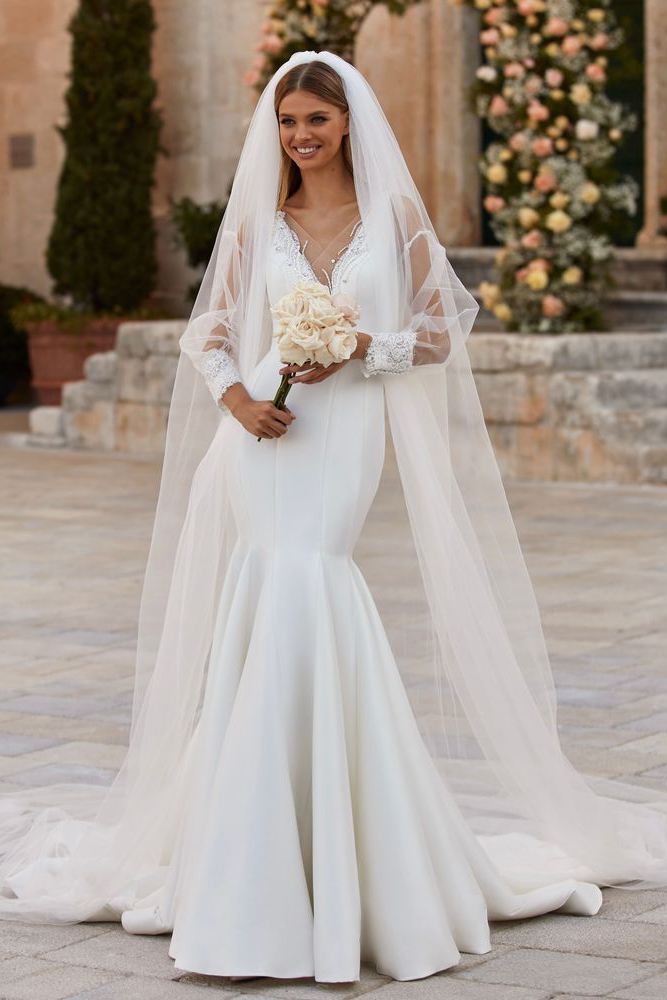
ADVERTISEMENT
→ Find the Perfect Balance
- If your dress has a lot of embellishments, you should choose a wedding veil that is simple with minimal details, if any.
- If your dress is of a simple design, you can be a bit more exorbitant with your veil and opt for more elaborate accessories.
- You don’t have to match the details of your wedding dress and veil perfectly, but they should complement each other. For example, if your gown has pearl-colored adornments, so should your veil.
Source: Carolina Herrera
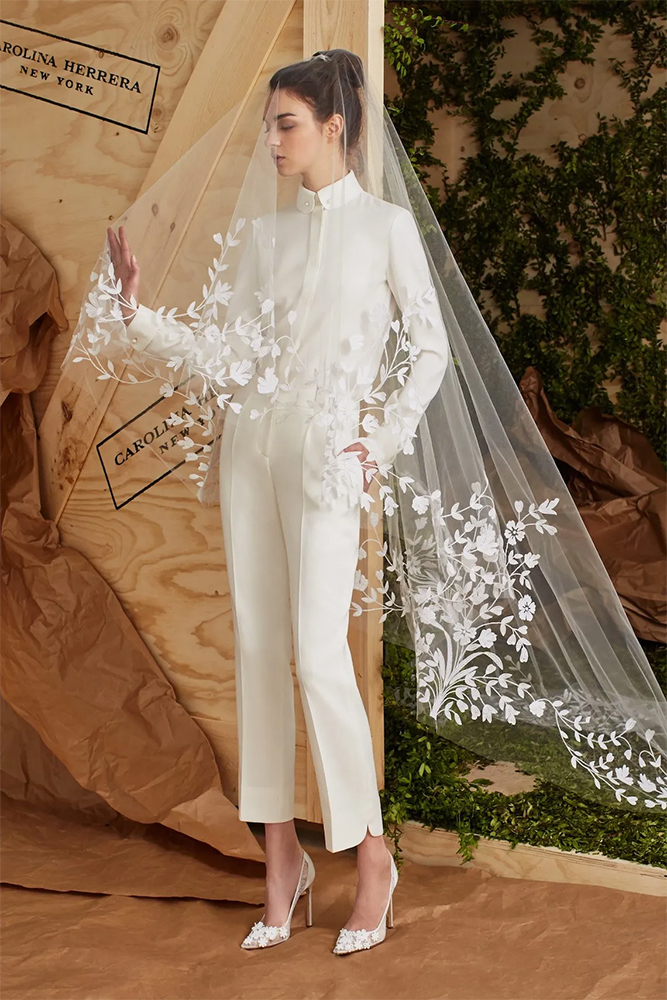
ADVERTISEMENT
→ Select the Perfect Fabric
There are a number of different materials for wedding veils such as satin, silk, lace, and tulle. Tulle is the most popular choice as it is both classy and economical. As well, it tends to have an airier look and feel and retains its original shape better than heavier materials such as silk or satin.
Source: Milla Nova
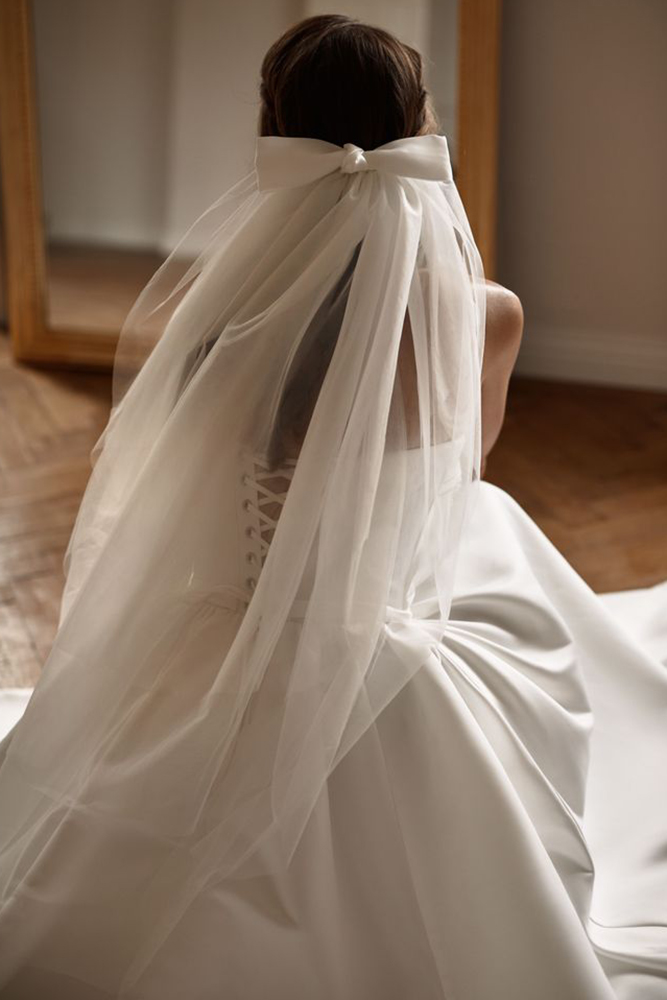
ADVERTISEMENT
→ Choose a Color That Compliments Your Wedding Gown
It is best to match the color of your wedding dress and veil as closely as possible. Don’t rely on photos while wedding veil shopping; bring a swatch of your wedding dress fabric for the closest comparison. However, if you happen to be wearing an antique veil that is a family heirloom, you might not want to dye it to match your wedding gown. As long as the colors are relatively close it does not have to match 100%.
Source: Galia Lahav
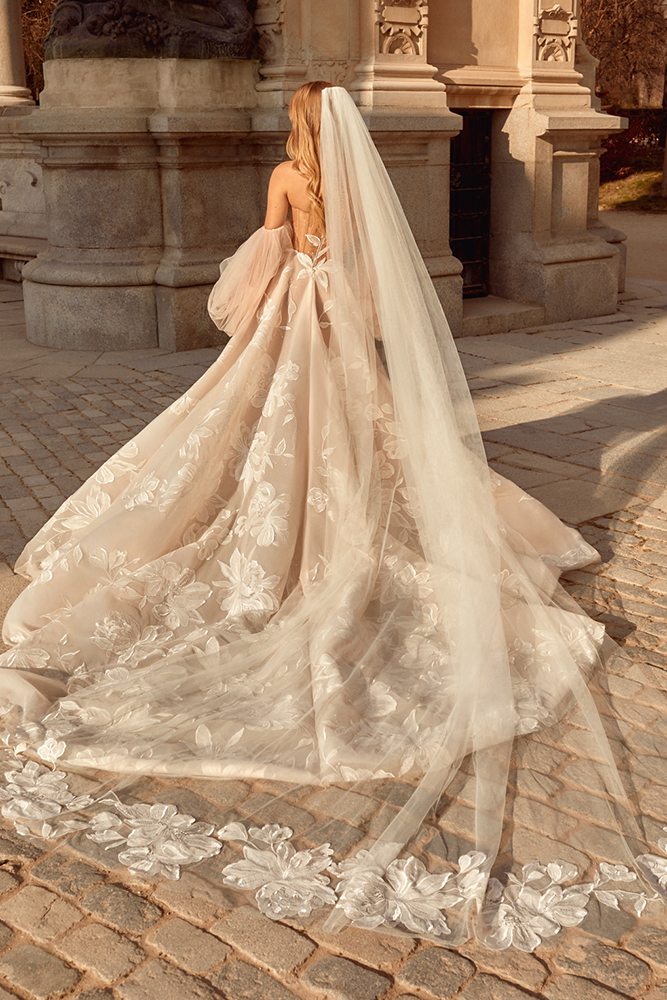
ADVERTISEMENT
→ Think About Your Wedding Hairstyle
Your wedding hairdo will play an important role in how your wedding veil will look on your wedding day so you should have an idea as to how you want to wear your hair when you go wedding veil shopping.
- If you are going with an updo such as a bun or chignon, you can pin your veil above the hair to add more volume. This helps achieve a timeless, traditional vibe.
- For a more modern look, pin your veil below your updo.
- If you are considering a low up do or wearing your hair down, a mantilla veil, halo veil or bridal cap will work best.
- If you have shorter hair, you should attach the veil more toward the front of your head to elongate the veil.
Source: Grace Loves Lace
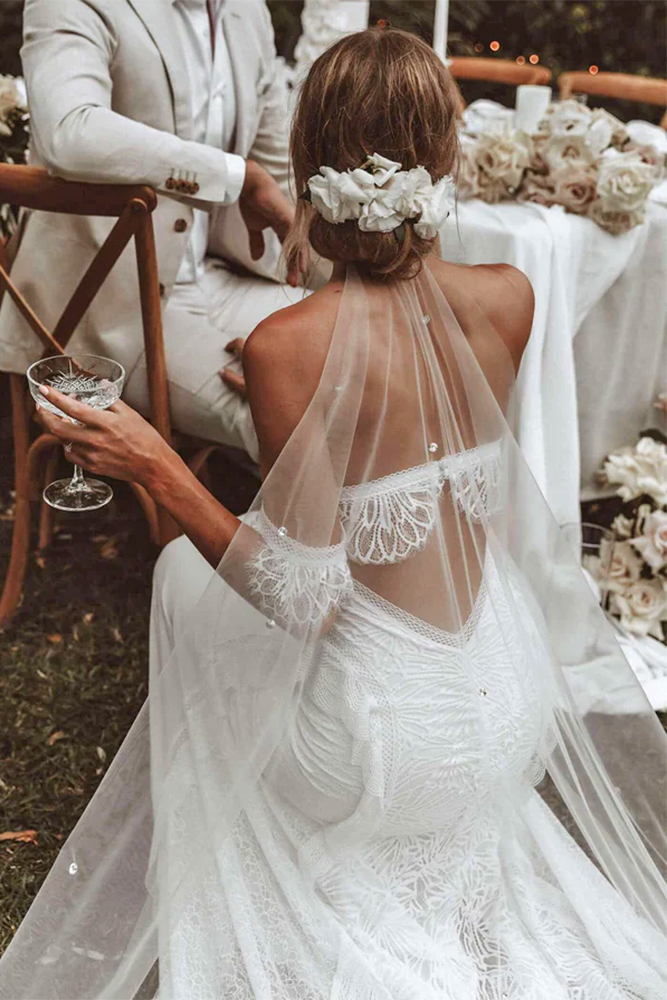
→ Keep Your Other Accessories in Mind
As well, if you are going to have additional accessories to accompany your wedding gown, you need to take this into account when shopping for your wedding veil.
- A tiara will not bode well with a poofy fountain veil.
- Cathedral, chapel, elbow, and fingertip-length wedding veils will look elegant with a crystal or beaded headband or a royal topper.
- Blushes and birdcage veils are best enhanced with unique embellishments such as a floral barrette or a feather.
- Ornate combs traditionally are worn with mantilla wedding veils.
Source: Grace Loves Lace
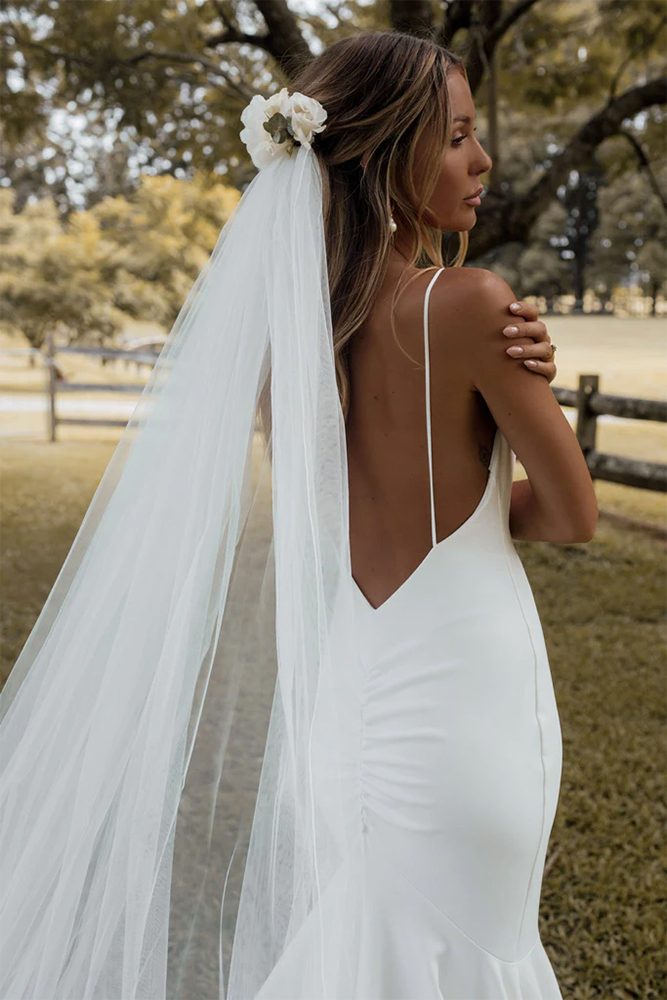
ADVERTISEMENT
→ Consider How Many Tiers You Want
- For a clean and elegant look, one tier is quite stylish and sophisticated.
- For a more elaborate affair, two to three tiers are becoming as well as more traditional.
- Remember, a blusher veil will add an additional tier!
- For those with more elaborate hairstyles, opt for fewer tiers as this will draw attention away from your gorgeous hairdo.
- If you have a simple hairstyle, you can wear multiple tiers without distracting from your hairstyle.
Source: Grace Loves Lace
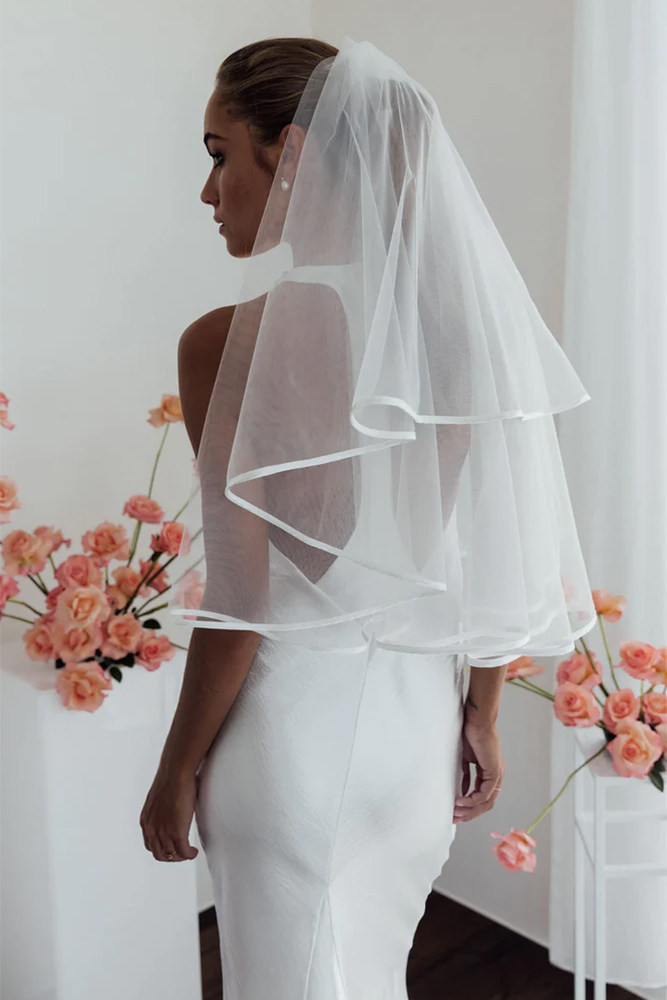
We hope our helpful guide on how to choose wedding veils will help you find the veil that best enhances your gorgeous physique, beautiful face, and stunning gown! No matter what wedding veil you chose, out will be a positively exquisite bride!
Save How To Choose Bridal Veil to your Pinterest board!

ADVERTISEMENT
